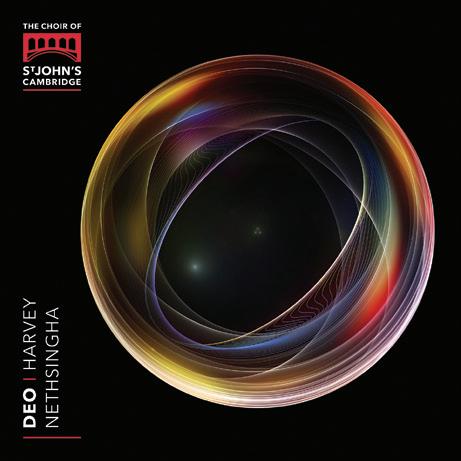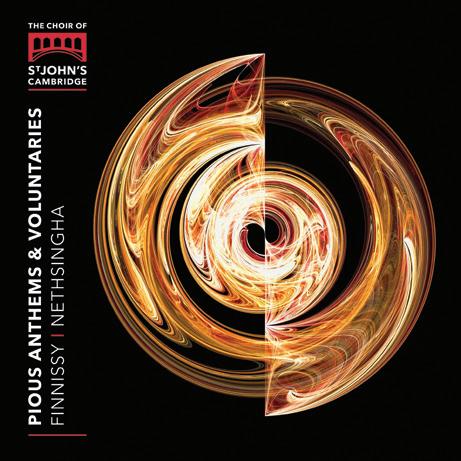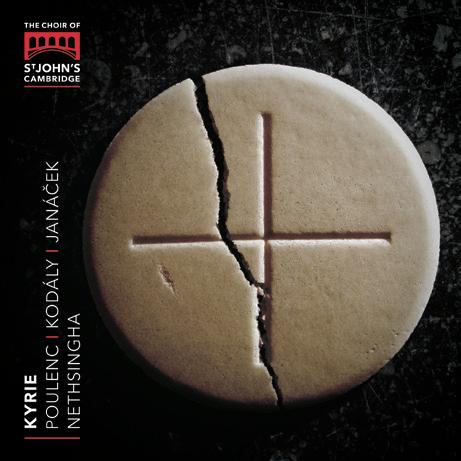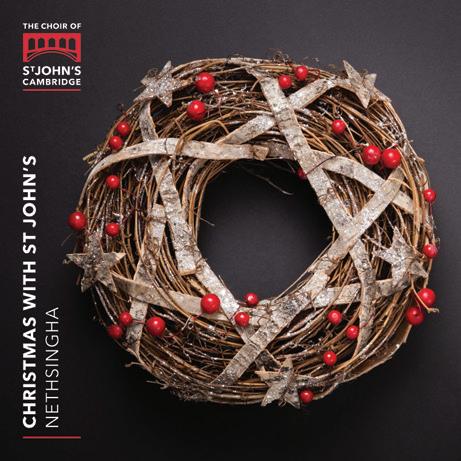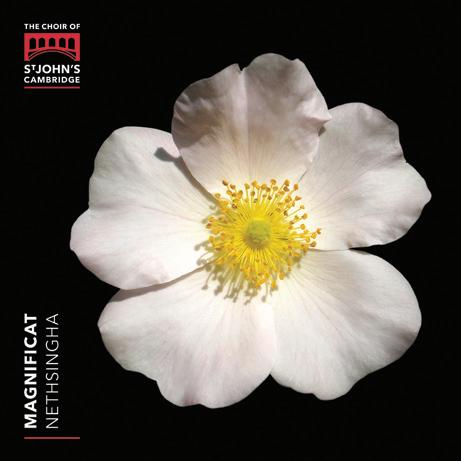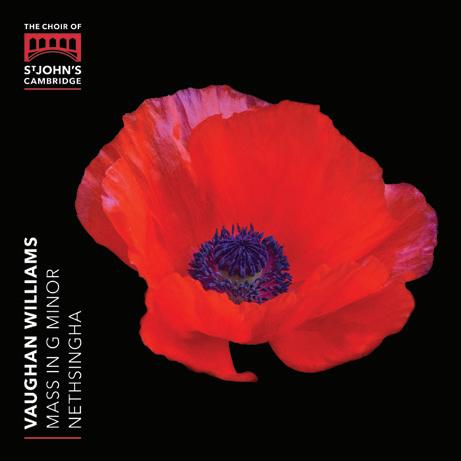
Pavel Chesnokov (1877-1944)
Six Choruses for Mixed Voices Op. 40 No. 4
Herbert Howells (1892-1983)
& Nunc Dimittis
Moore (b. 1943)
& Nunc Dimittis
Kenneth Leighton (1929-1988)
& Nunc Dimittis
Magdalenae Oxoniense


Pavel Chesnokov (1877-1944)
Six Choruses for Mixed Voices Op. 40 No. 4
Herbert Howells (1892-1983)
& Nunc Dimittis
Moore (b. 1943)
& Nunc Dimittis
Kenneth Leighton (1929-1988)
& Nunc Dimittis
Magdalenae Oxoniense
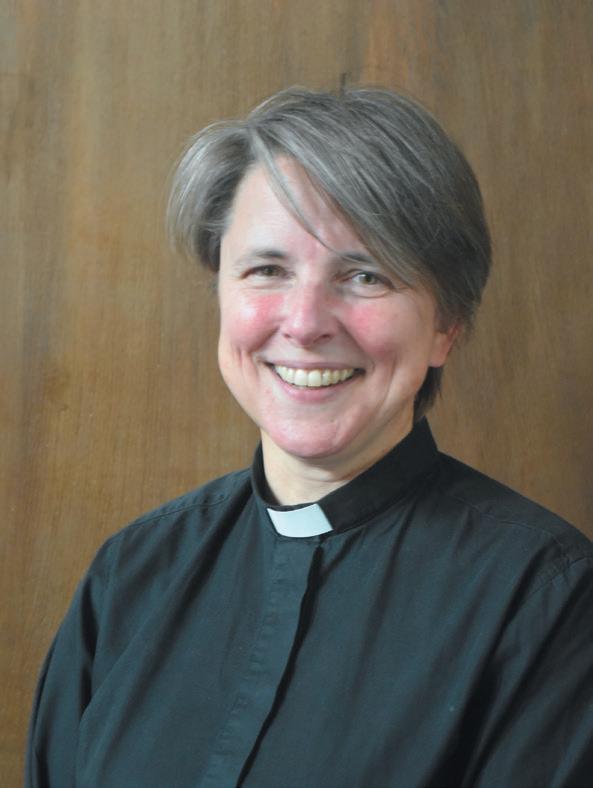
It is the gospel of Luke that provides the texts for what in the Roman Catholic daily liturgies were called the ‘Evangelical Canticles’. The Canticle of Zachary, commonly known by its first word, Benedictus, was sung in the early morning at Lauds. The Canticle of Mary, known as the Magnificat, was sung in the early evening and the Canticle of Simeon, known as the Nunc Dimittis, was sung at night.
Over the 16th and 17th centuries, Cranmer’s new, then revised, prayerbook for the postReformation English church, made use of these Lukan texts at the two daily offices of Morning and Evening Prayer. And the rhythm of psalms, canticles and the reading aloud of Scripture in those offices is a liturgical form that has endured until today. The point of these new services was that they were not to be restricted to religious communities. They didn’t even need a priest at all: they were services of the people, sung or said by the people in their own language.
Evening Prayer according to the Book of Common Prayer was, in its time, a radical service, but one that acknowledged its debt
to the past as well as creating something new for the future. It has been said or sung in churches ever since as a way of thanking God for the day that is past. Because of its enduring repetition and rhythm, it is often expressed as an anchor point in the life of an individual or a community. Whatever else is happening, Evensong is sung; and the opening response
‘O Lord open thou our lips’ is an intervention in a much longer conversation between humanity and God. A conversation that started in the Garden of Eden with God’s question ‘Where are you?’. In today’s church, Evensong has evolved into a service that is a mixture of participation by speaking or singing and another sort of participation: meditation and prayer while the choir sings. And this mixture of congregational participation is an inheritance of the distinctively English form of reformation. While in Germany, Martin Luther was leading a singing reformation, encouraging everyone -- not just the priest or the choir -- to learn by heart the psalms, set to popular tunes, and to join in the singing of hymns. There was no congregational participation in hymn singing in England until the 18th century. Psalms and canticles yes, hymns no.
But not only were English parishes not singing hymns while Protestant Germany was awash with them: there was also a clear musical distinction between England and the Continent. Thanks to one woman -- Elizabeth I -- England kept its cathedrals with their choirs. Because of Elizabeth’s personal patronage of composers at
the Chapel Royal, and her known support for choral singing, a twin-track musical reformation began to take shape: parish congregational singing, and professional cathedral music. Elizabeth also not only tolerated but encouraged composers such as Tallis and Byrd to continue writing in both English and Latin. In this way, she was more Lutheran than Calvinist – she might even be described as a lone Lutheran amid the prevailing reformation culture in England, which was Calvinist. More than any other individual, she set the course for the musical story of Reformation England and the enduring appeal of Choral Evensong. By establishing an expectation that might be characterised as “both and” rather than “either or” (professional and congregational singing), she enabled the broad and rich musical inheritance we enjoy today.
The twin-track Elizabethan musical reformation means that, theologically, congregations are shaped and taught not just by the text but by the form of the music itself. In meditating during a professional choir’s rendition of the Magnificat, I am taught that God is transcendent, beyond me. By joining in with the choir to sing a hymn, I am taught that God is immanent beside me, requiring my cooperation.
This, it seems to me, is another way of expressing theologically what happens musically in the dynamics of a choir singing the canticles at Evensong. The choir sings the music created by the composer. As the singers sing together, they must sing the part they have been given, otherwise another will miss their cue. Similarly, they must rest when they are asked to, otherwise another’s voice won’t be heard. Sometimes, one voice is in tension with another; that is the composer’s intention. When singers in a choir sing, they sing in another’s consented silence. The texts of Evensong are energetic and radical in themselves, and the song of all songs is given
to Mary in her Magnificat, after the tradition of Hannah in the First Book of Samuel. The song is itself a revolutionary cry, calling for a new world order. Jesus would repeat this song’s sentiments when he unrolled the scroll of the prophet Isaiah in Nazareth to proclaim the year of the Lord’s favour. Christian theology emphasises the relation between Jesus the Son and God the Father, but in his song of liberation it’s clear he was his mother’s son too. In Nicaragua during the revolution of the 1970s, the text of the Magnificat was banned, so powerful were its sentiments of putting down the mighty from their seat.
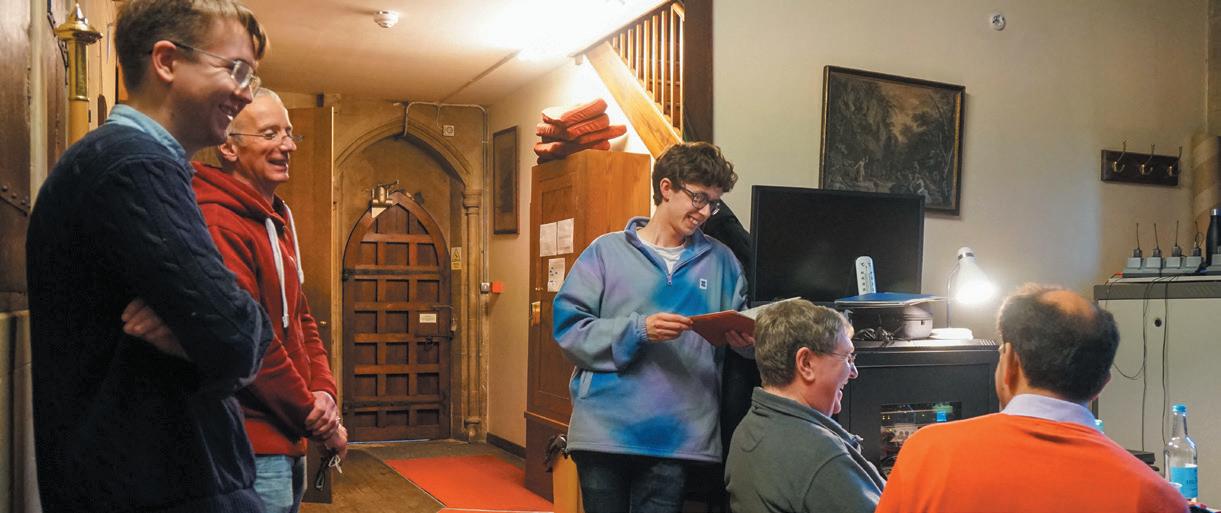
The text of the Nunc Dimittis is equally provocative too, even given as it is to an old man Simeon in Luke’s gospel, whose acceptance of his own death comes with the sight of the Saviour, the light who will lighten the Gentiles. While the Book of Common Prayer places it at Evening Prayer daily, revisions since then have included it as part of the funeral rites of the Church of England, often sung as the coffin is taken out from church. The text faces all who hear it with the question: what is it that would have to happen to you today for you to say that you were content to die? For Simeon, it was the infant Christ, for whom he had been waiting. The profound reconciliation with the certainty of death that is represented by the Nunc Dimittis is a profound teaching in itself for those who still live.
story of God, the Church’s worship of whom will always revolve around Christ’s inexorable journey to the cross. The vivifying music in this collection that not only embellishes but expresses these ancient texts remind those of us who listen that music is itself a language of the human spirit. And that our mouths shall shew forth thy praise is itself a call to prayer for the whole world.
Such is the power of these texts that the challenge for composers is acute. Rarely will a composer be asked to set a text that is so regularly repeated, and not just for a concert hall audience but for a congregation who are listening for the voice of God. Given this musical responsibility, theologically it is important that not every cadence resolves in liturgy, that not every melody is comforting. Dissonance is as important as harmony in the
If you wish to enlarge the manuscript images, you can view the booklet online using this QR Code or the link l.ead.me/mag3

Much of the third volume in our series of Evening Canticles focuses on music in a twentyyear period, from 1945 to 1965. We hear how the dates of composition influence the character of the music, with George Dyson’s setting
composed at the end of World War II, and Bryan Kelly’s canticles coming from the middle of the Swinging Sixties. Kenneth Leighton was a prolific composer for the Church but only wrote two sets of Evening Canticles; one was on our first volume, whilst the other is included here. I have always loved the music of Herbert Howells and that bond becomes deeper over time; I am grateful to Andrew Reid for his insightful thoughts as to how this music, like that of Messiaen, evokes such a powerful sense of the divine. We compare the settings which Howells wrote for the two great London foundations of St Paul’s and Westminster Abbey, releasing the album as we commemorate the 40th
anniversary of the composer’s death. The album also includes the pioneering setting in B flat by Howells’ teacher, Charles Villiers Stanford. We include the canticles written for St John’s by Philip Moore, the finest living representative of the long tradition of British organist-composers. Whereas the first two volumes contained forward-looking settings for St John’s, by Michael Tippett and Julian Anderson, Moore’s setting for our college takes the model of a sixteenth-century verse service with chamber organ. Just as Magnificat 2 ventured outside the Anglican tradition with Arvo Pärt, so the new album opens with Pavel Chesnokov. The cathedral where Chesnokov worked was
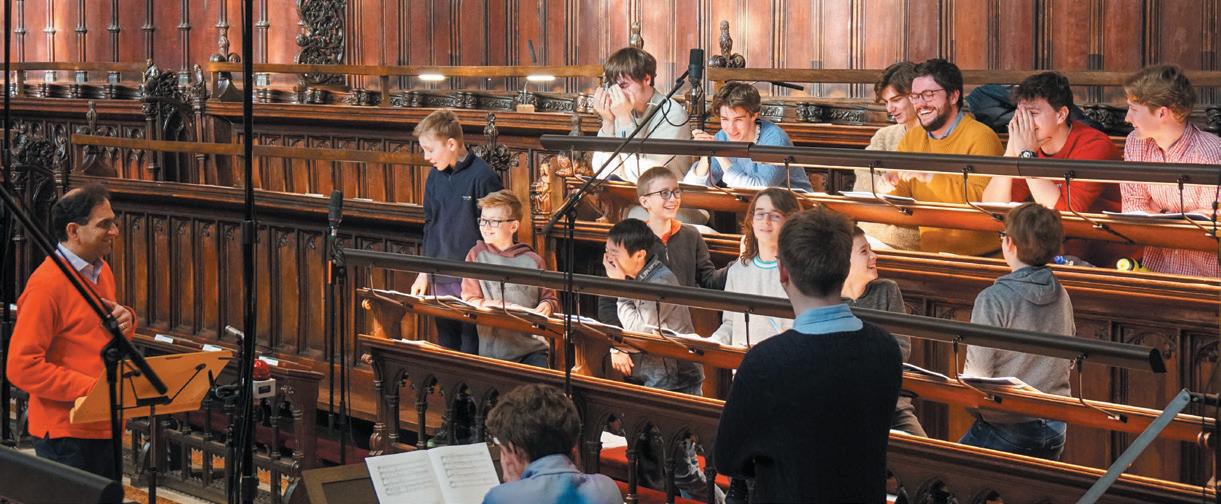
destroyed by the Soviet authorities; this upset him so much that he gave up composition for ever. That seems even more poignant today as we witness the terrible war and destruction occurring in Ukraine.
I am conscious that the first three volumes have consisted entirely of music by men, but the repertoire is gradually changing; my final volume in the series will start to redress the balance with a number of settings by women. I have enjoyed curating this album – choosing, performing and ordering the works; which paintings should go in the same room, and how close together should they be? Chesnokov flows naturally into the G minor of the St Paul’s Service; Leighton ends by leading us into a dream world from which the Westminster Service takes over. The simple purity of the Moore makes a striking contrast between the opulence of Howells and the relentless energy of Leighton. An album which began with great seriousness concludes with everyone letting their hair down in Kelly. I am grateful to Lucy Winkett for her eloquent and illuminating introduction to the album. I continue to marvel at how these ancient texts inspire composers in such different ways.
Pavel Chesnokov was amongst the leading Russian choral musicians of his time. He was one of ten children, son of the choir director at the local church. When he was seven Pavel enrolled at Moscow Synodal School of Church Singing, where he boarded and received an exceptional musical education free of charge. He stayed at the school until he won a gold medal at the age of 18, having followed a rigorous and broad musical curriculum including piano, singing, composition, score reading and conducting. String quartets often played for the choral conducting classes; Chesnokov was also a very highly regarded violinist. It was the exceptional standard of the Synodal Choir at this time which encouraged so many composers to write for the church.
At the age of twenty-seven Chesnokov started taking regular composition lessons with Sergei Taneyev, teacher of Rachmaninoff and Scriabin, and piano soloist for the premiere of Tchaikovsky’s First Piano Concerto. Chesnokov was appointed Head of the Choral Conducting programme at the Moscow Conservatoire in
I have written a great many choral compositions, especially religious ones. I would estimate five hundred sacred and one hundred secular. But my central work, my lifework itself, I consider the book [The Choir and How to Direct It] completed in December 1930.
1920, a post he held until his death. In 1928 the Soviet authorities imposed a formal ban on sacred choral music, though it had been increasingly difficult to function as a church musician during the preceding decade. In 1931 the cathedral where Chesnokov had been choirmaster was destroyed on the orders of one of Stalin’s associates.
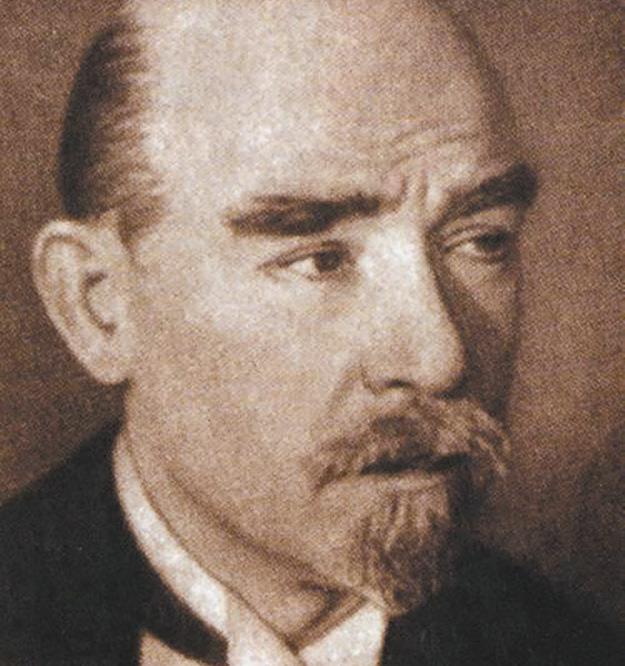
Three months after the Russian Revolution of 1917 Chesnokov began work on his book The Choir and How to Direct It.
By pouring his energy into the book, Chesnokov sought to preserve the essence of the pre-revolutionary choral tradition. The book expresses optimism that future generations will build on the techniques and views he describes, but the political situation made it extremely difficult for Chesnokov to get the work published. Chesnokov writes in detail about the three elements of ensemble, intonation and nuance. The goal is to combine these elements to form a choir which functions as a single organism. John C. Rommereim, who translated the book into English, summarises Chesnokov’s aims:
a complete, organic unity among the singers; constant, unspoken, intuitive communication and adjustment between individuals in the choir, between sections, and between the choir and the director; the highest standards of individual responsibility on the part of each singer; and finally, an overall flexibility that allows the ensemble to follow the subtlest shifts in interpretation indicated
by the conductor. […] Chesnokov offers an inspiring example of a man who gave of himself with generosity and enthusiasm through times of great upheaval and hardship, who retained his high ideals in the face of oppression, and whose contribution to the choral art reaches across the barriers of time and nationality. Recently there has been something of a revival of interest in Russian pre-revolutionary choral music, but we are still only scratching the surface. The latest edition of Grove’s famous musical dictionary doesn’t even have an entry for Chesnokov. An early collector of Russian choral music was Chad Varra, priest and founder of The Samaritans. Varra’s daughter, a family friend, gave me some copies of a Russian music volume which Varra had collected and published privately. That was how I found this Nunc Dimittis, which is from Chesnokov’s Six Choruses for Mixed Voices (op. 40) and also exists in a version for tenors and basses only. In the Orthodox liturgy this canticle does not include the doxology (Glory be to the Father…). The music is introspective and deeply felt, with one long-breathed crescendo building to an overwhelming climax, To be a light to lighten the Gentiles, before subsiding into the candlelit shadows. The structural arch-shape is similar to Messiaen’s Apparition de l’Eglise éternelle.
Herbert Howells, of whom I have written in volumes 1 and 2, was an articled pupil of Sir Herbert Brewer at Gloucester Cathedral. Though thirteen years younger, John Dykes Bower was a fellow pupil in Gloucester. He went on to become Organist of Truro Cathedral at the age of twenty-one, progressing briefly to similar posts at New College, Oxford and Durham, before becoming Organist of St Paul’s Cathedral in 1936. It was here that Howells wrote a set of canticles for his old friend. The work is very closely associated with the building after which it is named, yet there is evidence that it may have been started with York in mind. It is likely that Howells would have received encouragement from the Dean of York, Eric Milner-White. As Dean of King’s a decade earlier, he had persuaded Howells to write the Collegium Regale settings which initiated his most fertile period of canticle writing. Whether or not the York speculation is true, the breadth, architecture and harmonic pacing of the work are ideally suited to the unique St Paul’s acoustic. The music is on a monumental scale, but teeming with beauty and detail like the building itself. Breadth and grandeur are mixed with underlying urgency and excitement.
Several analogies for Magnificat come to mind: it is like a train journey, full of momentum, emerging through brief tunnels into totally new landscapes – or a volcano smouldering at the start and periodically erupting – or a series of surging waves, slow-moving and calm-looking, but immensely powerful and often terrifying. Whilst made up of many interconnected and harmonically wide-ranging sections, the whole work is highly organic. There are several uses of
unison choral-writing to aid clarity in a space with over ten seconds of resonance. The setting is predominantly homophonic, and there are always gaps between blocks of text to allow the resonance to clear a little. The organ part is bubbling with energy – little dotted rhythms abound – but there are contrasting moments of stillness in the organ at And his mercy, and hath exalted, and He remembering. The emotional temperature of the music is very finely controlled and adjusted, with an extraordinary sense of architecture.
Mary’s wide-eyed excitement is heard at For behold. Unlike Howells’ settings on the previous two volumes, this work has no break before He hath shewed strength – instead we are propelled headlong into the new section. The most contrasting music occurs at He remembering but the main theme comes back in the organ from Israel, hastening the imposing start of the Gloria. This starts with a duel between organ and choir – a rare occurrence of the two being pitted against one another. The monumental writing reflects the massiveness of the building itself.
World without end often inspires Howells to produce an apocalyptic moment. The settings for St Paul’s, Westminster, St John’s and Dallas

give good examples. The slow harmonic rhythm of the work is exemplified by the end of the Gloria, a prolongation of the pedal points E flat – F – G. Harmonies overlap in the St Paul’s acoustic, and the music sometimes gives the impression of that space even if the work is sung elsewhere. One example is four bars from the end of the Gloria where a G major triad is superimposed on an A flat major chord together with the internal pedal note F.
Nunc Dimittis opens in a murky cave – or from Simeon’s tomb? – and a beam of light enters through a crack in the rock. The right-hand organ entry has echoes of Collegium Regale.
In Sophie Cleobury’s words, both open with a melody that spirals down with no obvious focus until it lands. The organ’s opening chord picks out notes of the final chord of the Gloria and its preceding F pedal point, as though there are still flickers of echo even after the Second Lesson has been read at Evensong. The ambiguous tonality eventually settles on G major, but this is immediately questioned by the choir. As in the Gloucester Service, Simeon’s strength falters as soon as he has started to utter his first word. Howells is sparing in his use of divisi; in her illuminating study of Howells’ Evening Canticles Cleobury has pointed out the
composer’s predilection for enriching specific words or episodes. Both Collegium Regale and Westminster Service use soprano divisi at To be a light to lighten. Similarly, brief treble divisi is used in the St Paul’s Service to depict the falling rays of light at for mine eyes. In each instance the lines seem to grow out of one another.
The single unbroken, broadly-unfolding section from For mine eyes is a contrast to the separate paragraphs of the Magnificat; the slower tempo allows different possibilities. The vocal parts seem to swim around, with no one part being prominent for long. Howells is a master of Brucknerian slow build-ups, and this is one of his finest. The brief rest before and to be the glory heightens the drama. Glory itself expands in both directions – first an accented choir chord, then the lowest pedal note shaking the building’s foundations, and then a treble top A flat soaring up into the dome.
The autograph held at St Paul’s Cathedral includes an alternative setting of the Gloria to the Nunc Dimittis. This is crossed out, with a note added to indicate that the Gloria to the Magnificat is to serve for both canticles. In the final version, the first half of the Gloria is new but As it was in the beginning reverts to the
original Gloria. The new Gloria reprises the initial antiphonal exchanges, but now heard more emphatically in C minor, allowing the Gloria to fall overall by a perfect fourth like a giant plagal cadence.
The work was composed just after the premiere of Hymnus Paradisi. In an article on that masterpiece, Reginald Jacques wrote of Howells’ vocal writing in a way which seems equally applicable to the St Paul’s Service:
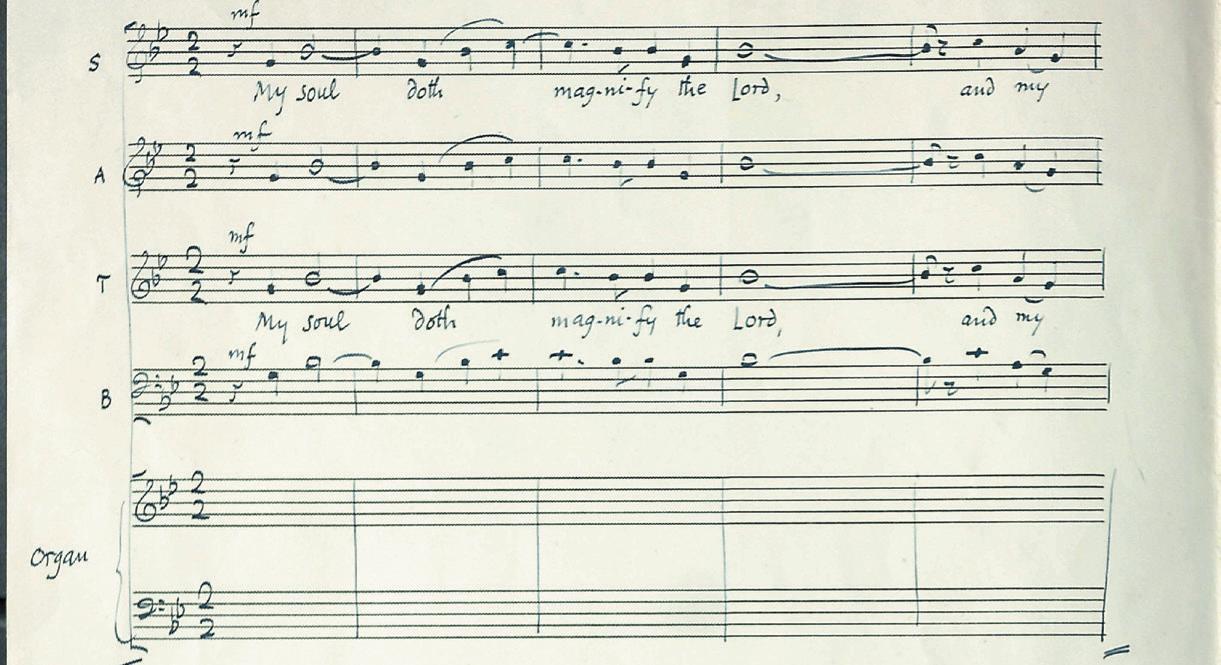
It is not merely the common-sense business…of writing in the most effective part of each voice, or the equally laudable device of giving a momentarily important line to one vocal part rather than another. There is the realisation that a voice is a personal thing, and that intelligent singers are capable of a wonderful alchemy, producing sounds with an infinite range of vocal colour.
Andrew Reid’s erudite and insightful article, Intimations of Eternity in Howells’ ‘St Paul’s Service’, is printed on page 37 of this booklet.
Philip Moore succeeded Edward Bairstow and Francis Jackson at York Minster, forming a similar succession of Organist-Composers to the one at Gloucester Cathedral which included S.S. Wesley, Herbert Sumsion and John Sanders. Moore has written prolifically for the Anglican Church. It was no surprise that Daniel Hyde should have turned to him for his first Christmas Eve commission after taking over the choir at King’s College, Cambridge.
Moore has always had strong links with St John’s. I remember him telling me about driving from Guildford to hear Evensong at St John’s in George Guest’s time. He said that it would have been worth the long journey just to hear George’s exquisite phrasing in the thirtysecond Magnificat antiphon. Both Christopher Robinson and David Hill performed Moore’s Prayers of Dietrich Boenhoffer here. Moore has written a number of works for the choir in my time, including a setting of the canticles dedicated to former organ scholar, John Scott, and an anthem for double choir lower voices, Hear my prayer, O heavenly Father. I remember hearing the premiere of the St John’s Service
broadcast live; I was bowled over by the beauty of every note sung by David Hill’s radiant choir.
Although we tend to refer to the work in English, Moore’s title page names the building in Latin, following a tradition dating back over five-hundred years and reintroduced by composers like Charles Wood. The St John’s Service has a charming modesty, simplicity
 Philip Moore
Philip Moore
and bright purity; I never tire of the elegant melodic contours. In writing for chamber organ, no sixteen-foot bass line, and alternation of solo and full choir writing, Moore is paying
homage to the verse services of the sixteenth and seventeenth centuries. It is a very practical work; if you have good enough soloists then, unlike many other contemporary compositions, it does
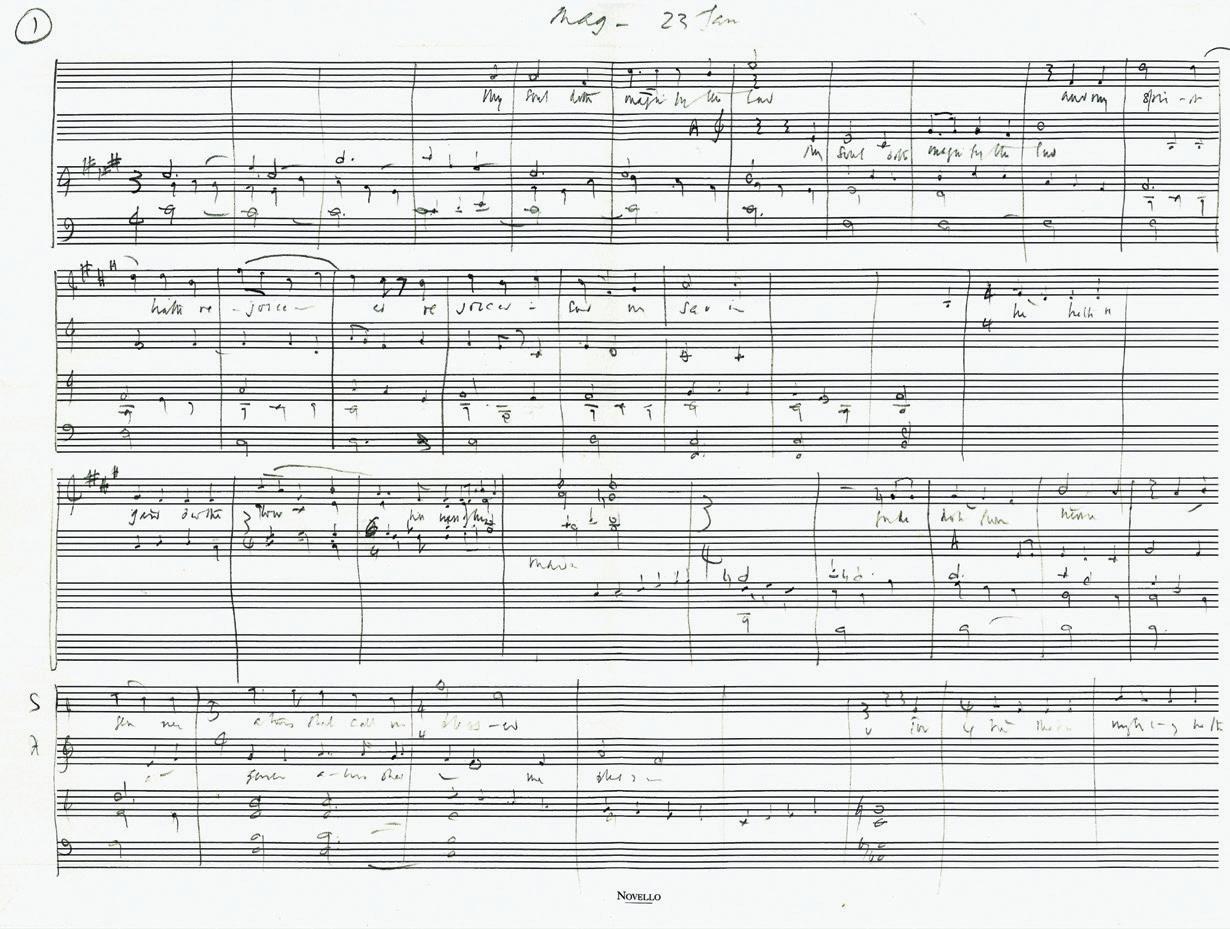 First page of Moore Sancti Johannis Cantabrigiense (see online at l.ead.me/mag3). With thanks to Philip Moore
First page of Moore Sancti Johannis Cantabrigiense (see online at l.ead.me/mag3). With thanks to Philip Moore
not take up an inordinate proportion of a choir’s weekly rehearsal time.
Moore has written twenty-one settings of the Magnificat and Nunc Dimittis to date, a number exceeding even Wood and Howells. Of the five in our repertoire here, the present setting was composed for Ash Wednesday 2006. This is the first day of Lent, a season when we bring to mind our sins, we repent and we are absolved. When describing our approach to Allegri’s Miserere Mei, Deus on our recent Ash Wednesday album, I wrote:
The aim is to conjure up a hypnotic, repetitive, healing atmosphere in which waves of sound wash over the listener without surprises. This is conducive to meditation, to reflection, to worship – for believers it cleanses the soul, and that is at the heart of the Lenten journey.
I repeat those words simply because so much of the description applies equally to the Moore. Here is a composer with a deep empathy both for the liturgical occasion and for the sound and style of the choir and its building. The organ accompaniments might be likened to a lullaby for Mary’s unborn child or a way of rocking the aged Simeon to his final sleep.
As with Berkeley’s canticles on Magnificat 2, studying the sketches gives an insight into the evolutionary compositional process. Three examples on the first page are the rhythm of magnify, the bass line at rejoiced, and the organ part after Saviour. As Howells often does, Moore conjures an atmosphere of nostalgia to evoke the timelessness of Abraham and his seed for ever. The same musical material is used at and holy is his name (God’s holiness is eternal) and world without end. Pianissimo unison writing is an especially effective texture in St John’s – Moore uses this to usher in the Nunc Dimittis Gloria. Both canticles are unusual in ending on secondinversion chords, but the low pitch of the organ chords prevents a sense of incompleteness. On the other hand, Moore seeks to create the smoothest possible transition from the final chord to the silence which follows – they are both part of the same unified liturgy. The final chords also remind us of the modal nature of the writing.
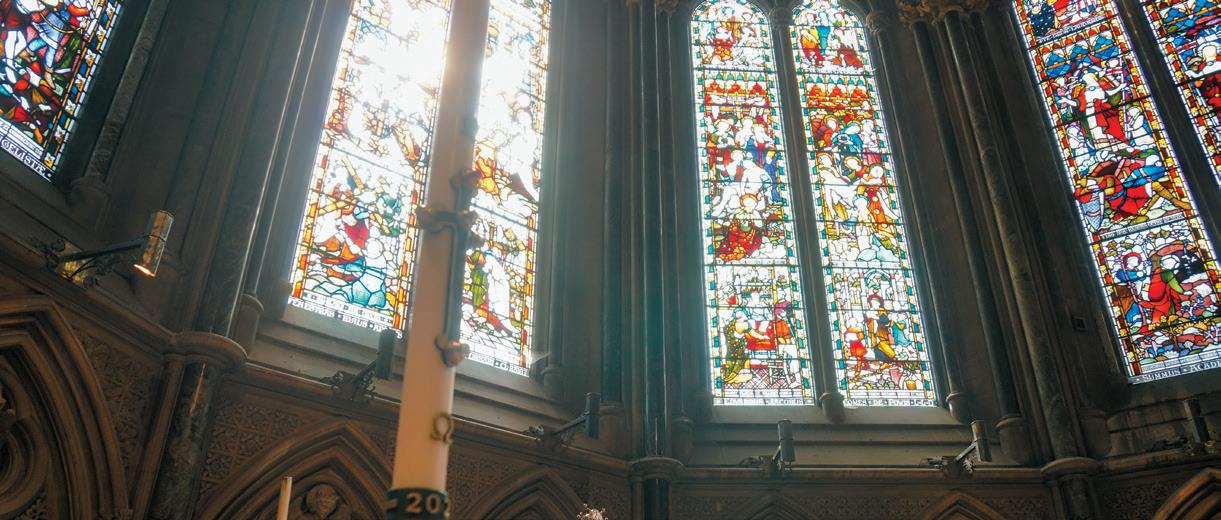
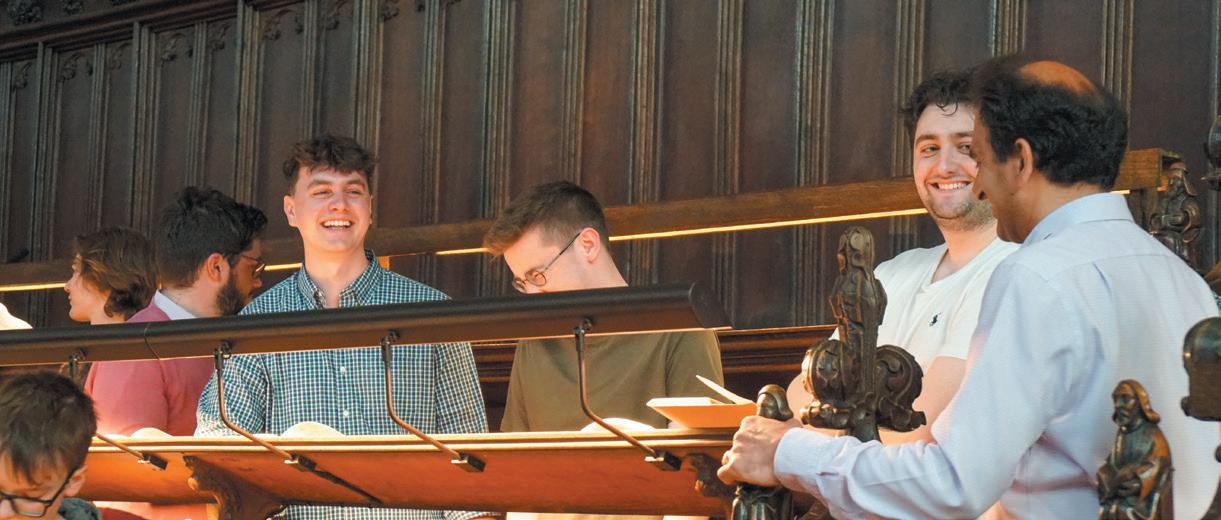
First page of Leighton Collegium Magdalenae Oxoniense (see online at l.ead.me/mag3). With thanks to Edinburgh University Library
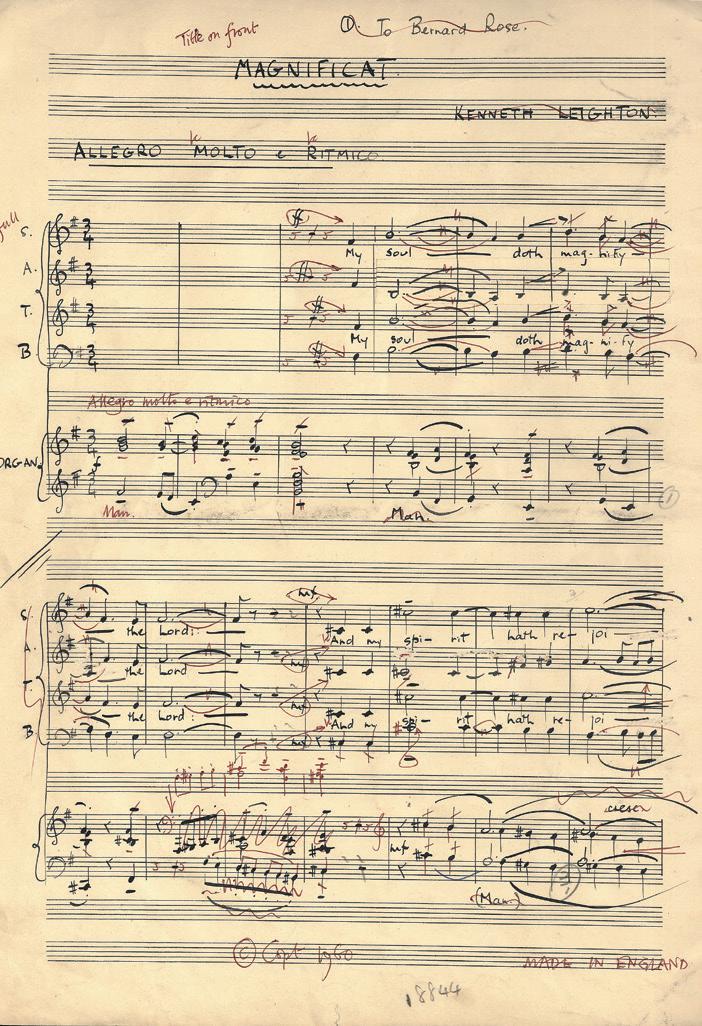
Second page of Leighton Collegium Magdalenae Oxoniense (see online at l.ead.me/mag3). With thanks to Edinburgh University Library
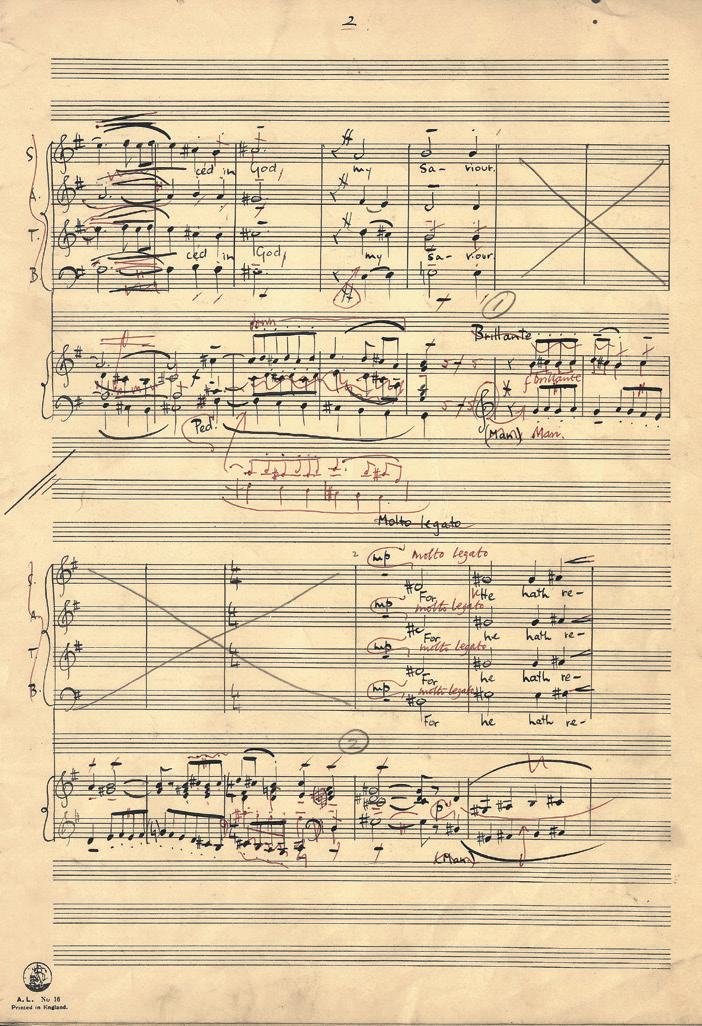
Kenneth Leighton’s two sets of Evening Canticles are amongst the finest of their time. The Second Service was first performed at New College, Oxford. The present setting was written a decade earlier and premiered just down the road at Magdalen College. I can’t think of any canticles like this before 1960; sixty years on it is important for us to remember how innovative they were.
Leighton had studied both Classics and Music at The Queen’s College, Oxford, gaining degrees in both. Bernard Rose, to whom the present canticles are dedicated, directed the choir at Magdalen for twenty-four years. He was an influential teacher to Leighton, who spoke of his wise and generous guidance. When Leighton’s Five Shakespeare Songs were premiered, Rose sang and Leighton played. It was Rose who introduced Leighton to Gerald Finzi, a hugely influential relationship. Leighton said of Finzi: It was the pathos, I think, and the compassion which spoke to me more intimately than the work of any of the other English composers of the time. Rose and Leighton grew to be very fond of each other. Kenneth and Lydia (his first wife) were frequent guests at the Roses’ house. In fact Leopold Stokowski was once a visitor at the same time in 1960!
Leighton’s Magnificat has roots in the structure of Stanford in B flat; both begin in tripletime, shifting to duple-time part way through and then reverting for the Gloria. Right from the explosive opening, the work has thrilling rhythmic energy. The organ part is full of imaginative colours and textures; its perpetual movement, even in calmer passages, binds the work together and also encourages the singers
 Kenneth Leighton
Kenneth Leighton
as
to have life in the phrase, to keep the vocal tone spinning, in the manner of some Schubert song accompaniments. He remembering his mercy is one example.
And his mercy has one harmony for many bars, above which the choir sings in four-part imitation for all generations, an atmosphere of calm from which to ratchet up the tension
Provided with thanks to Graham and Gregory Rose and then gradually wind down again; Leighton shares with Howells the ability to build long paragraphs. Choir and organ are equal partners in the drama – they play the roles of varied sections of an orchestra, for instance in the low brass chords beneath from henceforth all generations. At Abraham and his seed for ever the choir’s tessitura reaches out in an allencompassing way before the the organ epilogue
continues the word-painting. This searching, direction-less passage is complemented by the end of the swirling Nunc Dimittis Gloria. The depiction of eternity, of a realm beyond our own, is a central concern for composers of Church Music; Leighton tackles this in a very different way to Howells.
There are various ways in which the two canticles are subtly linked – for instance both start by setting up a tension between G and C sharp, a tritone apart. As in his Second Service, Leighton grows the opening Nunc Dimittis phrase out of the small seed of a single note, from which it winds its way out to the most harmonically remote destination. The slow harmonic rhythm of the canticle heightens the potential for dramatic effect at the key words lighten and glory.
It took me a long time to find the right character and colour for the Nunc Dimittis Gloria, because it’s so unlike any other Gloria I know. It takes us into another realm, not an earthly one; perhaps Simeon’s soul is dancing off into outer space, spinning around until it is way beyond reach. The music is weightless – there’s no gravity – there’s no organ pedal at all until a single final note. The music feels unfinished
– the solitary pedal note is the dominant not the tonic; we are left in mid-air on a chord which is a distant echo of that which ended the Magnificat Gloria. I love following this with the dreamworld which begins the Howells Westminster Service.
Some of the trebles in a recording session, 21st April 2022.

Some of the trebles in a recording session, 23rd April 2022.
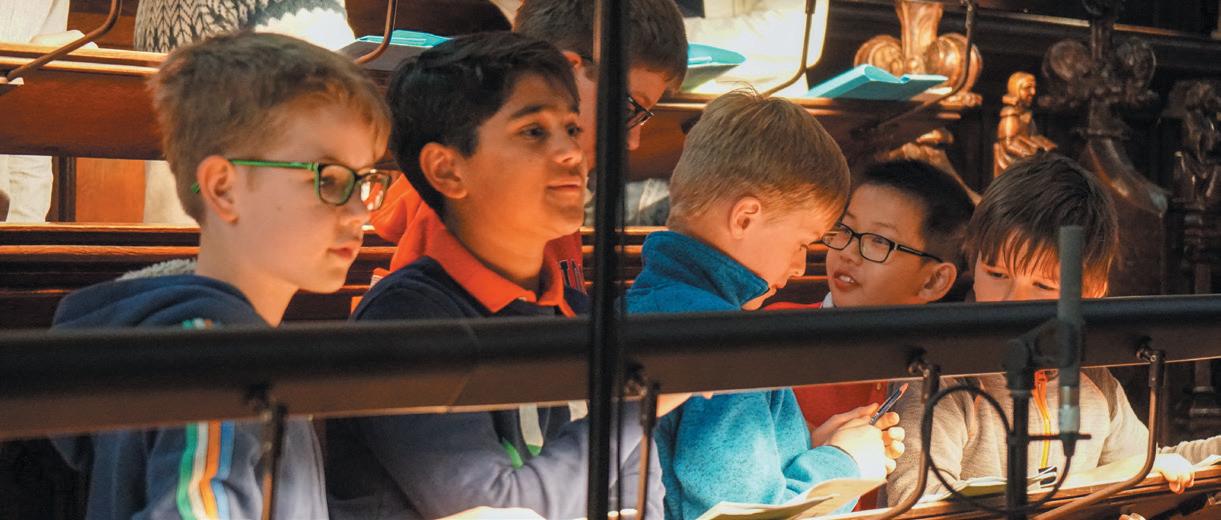
First page of Howells Westminster Service (see online at l.ead.me/mag3).
With thanks to the Dean and Chapter of Westminster
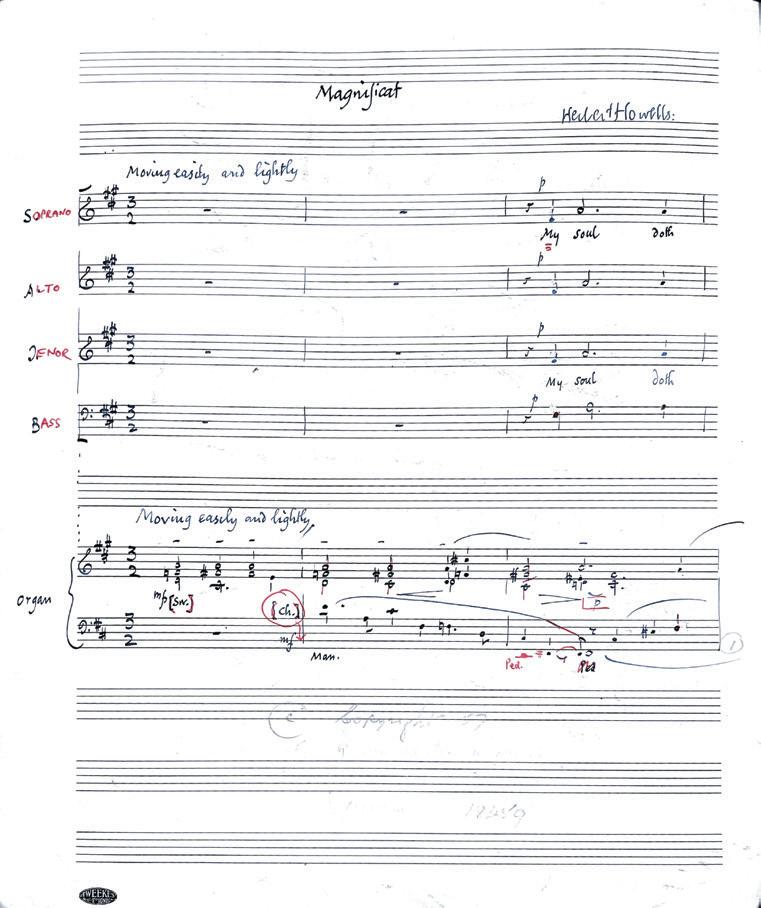
Second page of Howells Westminster Service (see online at l.ead.me/mag3).
With thanks to the Dean and Chapter of Westminster
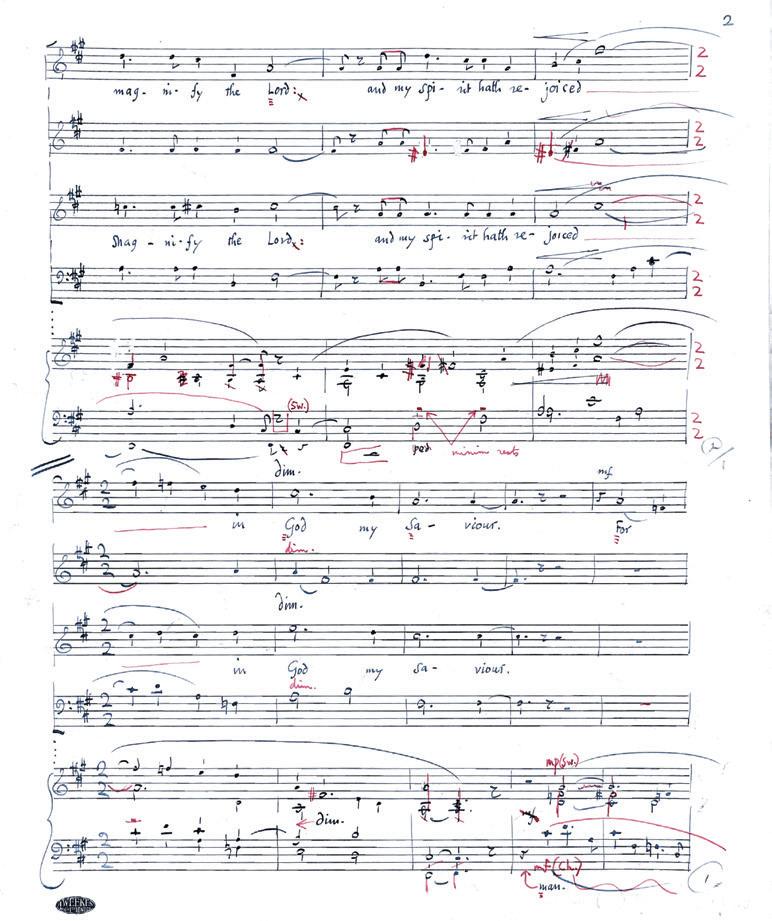
Westminster Abbey played an important part in the life of Herbert Howells. He composed Behold, O God, our defender for the Coronation of Elizabeth II in 1953. Four sets of canticles were premiered in the Abbey – Howells in E (1935; for tenors, basses and organ – to be included in our album Magnificat 4), Howells in D (1941; a largely unison setting for men’s voices and organ), Howells in B minor (1955; for the Church Music Society Jubilee Festival Service at the Abbey) and the present work (1957; for the Collegiate Church of Saint Peter in Westminster). The present work is twenty-four pages long, compared to twenty-eight in the St Paul’s Service, but it feels a lot more compact.
I grew to love this particular set of canticles when I was George Guest’s organ scholar; it was one of his favourites. When we recorded the work in January 2022 I had no inkling that I might ever work at the Abbey myself.
Westminster Abbey is full of stories and history; from bar one Howells transports us to a world of secrets, dreams and imagination. The choir almost whispers the first phrase. The music seems to be carried by the wind – floating, ephemeral – and this somehow reflects the awesome height of the building, emphasised by its narrowness. The work opens with alternating
D minor and F sharp minor chords, Moving easily and lightly, the oscillating F sharps and F naturals contributing to the enigmatic atmosphere. These chords form the kernel of the work. A cello melody in the second bar generates other material, often in linking passages.
In our first volume I wrote about the sensation of walking east through the organ screen at Gloucester, and how Howells reflects that in his music. There is something analogous at the Abbey when you leave the dark tunnel under the organ screen and the full majesty of the Quire rises up before you, like rounding a significant corner on the Cornish coast path and another twenty miles of cliff coming into view. He remembering his mercy reflects that sense of architectural wonder. With the exception of two settings (in G and E respectively) which combine Magnificat and Gloria into single movements, this is the first of Howells’ Magnificats to end with a harmonic question mark rather than a diatonic concord; the words for ever have particular meaning in this building. The airy, floating canticle begins and ends in a dream-like state; had Mary dreamt her visit from the Angel Gabriel? We are abruptly woken by the Gloria, marked Risvegliato (reawakening) – we are brought back down to earth with
the emphatic organ pedal which launches the trebles’ opening phrase.
Nunc Dimittis follows the example of Stanford in B flat by having a long unison passage for tenors and basses. The descending unison immediately before the Gloria recalls the equivalent passage of Stanford in C, though Howells’ version is starker and grittier. As in Collegium Regale the two Glorias are identical. The Gloria restates the Magnificat’s opening material, now forte, eventually arriving at the composer’s beloved F sharp major – a resolution at last.
The RCM Library holds musical sketches entitled Nunc Dimittis (St Peter’s), but these in fact ended up as part of the setting dedicated to Salisbury nine years later. Howells proposed the idea of a Westminster Service in 1956. Nine months later he sent the manuscript to Sir William McKie, the Abbey Organist, with a covering letter:
If I knew exactly what you yourself liked most (in idiom) or the building itself most cared for, I’d have known just what to write. You need not be afraid to turn it down if it seems the sort of thing you don’t like. Then I’ll have another go.
The humility of Howells is striking, and it is surprising that he professes not to know the building well. This may reflect the fact that the Abbey’s acoustic is less easy to categorise and understand than those at, say, King’s, Gloucester or St Paul’s. Yet Howells absolutely captured the spirit of the place. McKie was delighted with the work and it was heard for the first time at an Evensong during the First International Congress of Organists.
This is the eleventh of the twenty settings of the Evening Canticles which Howells wrote over a period of fifty-five years. Howells ‘painting’ the Evening Canticles again and again makes me think of David Hockney portraying the small single-tracked road of Woldgate fifty-two times in his The Arrival of Spring for his Royal Academy Exhibition in 2012. Close to the spot where Howells’s ashes are buried in the Abbey is Hockney’s stained glass window, The Queen’s Window (see page 28). On a summer evening, light streams in through the window creating an amazing wash of colours on the floor and the statue opposite. There is a similar interaction between Howells’ music and the buildings in which it is heard.
Sir George Dyson had a varied working life as composer, conductor, educator and administrator. Five of the composers on this album – Dyson, Howells, Kelly, Moore and Stanford – were students at the Royal College of Music. Four went on to be Professors there. Dyson also became Director of the RCM. for fifteen years from 1938, the fourth person to hold that position. His biographer, Paul Spicer, has done a great deal to re-evaluate Dyson’s reputation after a period of neglect.
[Dyson] was a deeply feeling, humorous, caring and loving family man who, in the manner of the day, was not particularly demonstrative in his affections, but knew the importance of those things of lasting value.
In church music circles Dyson is best remembered today for his two sets of Evening Canticles in D major and F major. In many ways they could scarcely be more different, especially the two Magnificats. Dyson in D was written in 1907 when the composer was on a musical pilgrimage in Dresden, enjoying the music of Wagner and Strauss. That Magnificat is a product of its Edwardian age – grand, self-
 David Hockney’s The Queen’s Window, photographed by Jim Dyson © The Dean and Chapter of Westminster
© National Portrait Gallery
David Hockney’s The Queen’s Window, photographed by Jim Dyson © The Dean and Chapter of Westminster
© National Portrait Gallery
confident, opulent and triumphant. As Stanford had done before him, Dyson found ways to incorporate symphonic qualities into the D major canticles. In both sets Dyson followed the examples of Wesley and Stanford (whose setting in G had been composed 5 years earlier) by incorporating the Gloria into the canticle as a single entity. Stanford in G was clearly an
influence on Dyson in F; both have prominent treble and bass solos in the two canticles respectively. Dyson makes each of his Glorias into a form of recapitulation, following the example of Stanford in B flat Magnificat.
Dyson’s long experience as a teacher, including thirteen years as Director of Music at Winchester College, gave him a clear sense of what was or wasn’t easy with voices. The F major canticles were composed for Sir Percy Hull’s choir at Hereford Cathedral. Their premiere did not take place until 1947, after Hull’s recovery from serious illness the previous year. Dyson returned to the Service in F major in 1955-56, adding Te Deum, Benedictus and a beautifully succinct Benedicite.
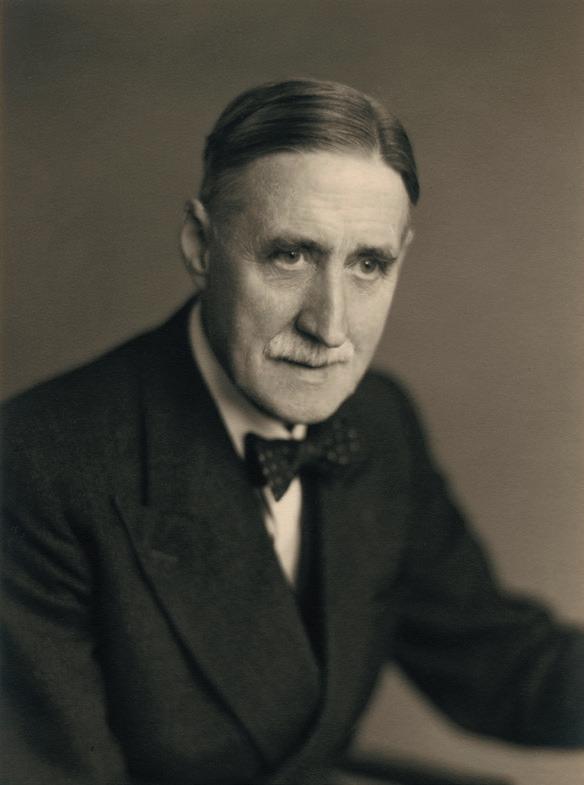
Dyson’s F major Evening Canticles are small scale, modest, succinct and undemonstrative –adorning the liturgy rather than the performers. Each canticle is constructed from its opening melodic phrase.
Like Philip Moore’s work earlier on the album, Dyson’s music scarcely raises its voice. I have already written about Moore’s organ part; perhaps Dyson’s economical organ writing shares the same soothing qualities. Of his
Collegium Regale Magnificat, also composed in 1945, Howells wrote that the mighty should be put down without a brute force which would deny the canticle’s feminine association. Dyson, composing in the same year, might well have had similar feelings in mind; the horrors of the recently-ended war inspired a humble style of composition. The dramatic central words of the text are downplayed by having different phrases sung simultaneously (e.g. He hath scattered the proud and He hath put down the mighty). This compression of much of the text allows more consolatory phrases, like He remembering, to be given greater space and prominence. The bittersweet alternation of major and minor chords at both the beginning and the end of the work gives a suggestion of yearning and uncertainty, perhaps revealing a similar state of mind to the opening of the Howells Westminster Service.
Charles Villiers Stanford was born in Dublin and became a student at Queens’ College
Cambridge in 1870. He was one of Cambridge’s first organ scholars and is described by Jeremy Dibble as the most promising musician the university had seen in decades. It was thanks to Stanford’s campaigning that Cambridge University Musical Society permitted women to join its chorus.
In 1874 the youthful Stanford was appointed to the prestigious post of Organist at Trinity College, occupying the rooms in Great Court once lived in by Isaac Newton. Trinity had previously shared a joint choir school with St John’s, but shortly before Stanford’s appointment a separate choir school for Trinity choristers was created. Stanford quickly took the choir to new levels of excellence, as well as spending extended periods in Germany studying and listening to music, including Wagner’s operas.
The Morning, Evening and Communion Service in B flat (op. 10) was premiered at Trinity in three stages between May and August 1879.
The Evening Canticles are in fact Stanford’s third setting, following works in F and E flat from 1872 and 1873 respectively. The earlier works make use of contrast between verse and full textures, but Stanford in B flat sticks to full choir throughout. Already in those first settings Stanford was experimenting with ways to make the music more structurally integrated.
There are various ways in which the whole of opus 10 is unified, rather like the movements of a symphony. D flat major is an important secondary tonal area, especially associated with references to Christ – to be a light in Nunc Dimittis, And thou, child in Benedictus, Thou art the King of Glory, O Christ in Te Deum. Jubilate, Benedictus and Nunc Dimittis share the same Gloria, ending with the famous Dresden Amen. This harmonisation of six ascending notes has been used by many composers including Wagner in Parsifal and Mendelssohn in his ‘Reformation’ Symphony. How appropriate, given that Stanford was central in the ‘Reformation’ of Anglican Church Music. Dibble writes of Stanford’s desire
to create a liturgical work that, with its involuted strata of organicism, analogy, thematic and tonal symbols, could be experienced across an entire Sunday of choral worship. In other words Stanford was attempting to create, within an Anglican environment, a form of ecclesiastical Gesamtkunstwerk in which elements of time, architectural space, liturgy, music, and words coalesced to form an artistic entity greater than the sum of its parts.
 Charles Villiers Stanford. Photograph by Bassano Ltd.
Charles Villiers Stanford. Photograph by Bassano Ltd.
Stanford orchestrated his Te Deum in B flat for the Coronation of Edward VII in 1902, following some controversy over what, if any, music by Stanford would be included in the service. The rest of Opus 10 was orchestrated in 1903. Adrian Lucas has made an excellent arrangement for organ of the elaborate orchestral accompaniment to the Evening Canticles. On the present recording we stick to Stanford’s original organ part, with the addition of a trumpet solo at the end of the Magnificat Gloria, reprising the canticle’s first melodic phrase.
Stanford’s melody at And his mercy is used several times, the range expanded in its second iteration and reaching the greatest elaboration on its final appearance at Abraham and his seed for ever. The contrasting melody for He hath shewed strength is derived from the same initial motif, and this music returns with different character for He remembering his mercy. Stanford makes considerable use of unison writing, a very helpful texture when he was trying to improve the sound and blend of his choir. The music is enjoyable both to perform and to hear; this has become one of the most popular of all canticle settings, and it has had a strong influence on later composers.
Stanford may have been the first composer to score most of his Nunc Dimittis for unison tenors and basses. This means of portraying the aged Simeon’s words was subsequently used by many others including Noble, Howells and Walton. Stanford’s long stream of melody unfolds organically. The climactic words are announced by a striking key change and by the first repeated phrase of text; they are capped at and to be the glory by the one non-unison phrase (demanding good tenors!) Stanford explored ways to make the comparatively short Nunc Dimittis text into a satisfying musical structure. In his earlier E flat canticles he had recapitulated the first line of text in long notes at the end, a device he was to repeat in his G major setting nearly thirty years later. In the B flat Nunc Dimittis he chooses a soft reiteration of the final words thy people Israel as a way to evoke eternity. The whole canticle comes across as an archedshape vision, with similar dynamics to those which Chesnokov would employ.
It is pleasing to include three fine works by Stanford and Howells on the same album. Stanford referred to Howells as his son in music. Howells always wore the signet ring which Stanford bequeathed to him. Of the B flat canticles Howells wrote:
[He] achieved three triumphs in that early and astonishing work. First, he swept aside the pretentious, empty gaudiness of the Victorian organist-composer…Second, he brought the first-fruits of his near symphonic formal instincts to the setting of canticles that had for so long been dismembered by the earnest, lustreless treatment of countless mid- and late- Victorians. Third, to the vast and costly church organs he assigned a significant, vital, highly disciplined part.

Walter Hussey, Vicar of St Matthew’s Northampton and Dean of Chichester, made an enormous contribution to the Arts through his commissioning of music, poetry, sculpture and stained glass. I have written about him in Volume 2, in connection with Walton’s Chichester Service (1974). A decade earlier, for the 1965 Southern Cathedrals Festival held at Chichester, Hussey’s commissions included Bernstein’s Chichester Psalms and Kelly’s Magnificat and Nunc Dimittis, the first of six settings Kelly was to write. What a festival that must have been! Bernstein had managed to perform his work in New York beforehand, but the Chichester performance was the official premiere. Bernstein also published a reduced scoring for choir, organ, harp and percussion. Kelly’s work is generally heard, as here, in the version with organ accompaniment. However, perhaps inspired by Bernstein’s example, Novello published Kelly’s alternative version with timpani, percussion, harp and organ in the same year.
The work bears a dedication to its first conductor, John Birch, Organist of Chichester Cathedral. The title has an asterisk leading to a footnote: This work is based on Latin-American rhythms. It was the Sixties, but the Church of England is not always at the vanguard of
cultural change. It is hard to understate the boldness and daring of this composition within the service of Evensong sixty years ago. That is backed up by the composer’s recollection:
When I first showed Herbert Howells the manuscript of ‘Kelly in C’ at the RCM he went through it, turned to me and said “My dear, I will tell you one thing about your setting. After each performance the church will have to be re-consecrated!”
Bryan Kelly was a chorister at Worcester College, Oxford. He studied composition with Howells and Gordon Jacob at the RCM. He received practical help and encouragement from Sydney Watson, whose setting was heard in the second volume of this series. Like Lennox Berkeley, whose canticles for Chichester also appeared in Magnificat 2, Kelly went on to study privately with Nadia Boulanger in Paris. By the time of Kelly in C, he was back at the RCM as a Professor of Theory and Composition. In his varied life he has later taught in Washington DC, Rome and Cairo. He now lives in Somerset. Kelly has worked as composer, pianist, conductor and teacher. His compositions include both light and serious orchestral music, educational works, as well as music for brass band, solo instrumentalists and choirs. Anyone who helps to prevent the Anglican choral tradition from becoming stuffy and antiquated should be thanked. Kelly in C is a beautifully crafted, concise product of its time. It put a contemporary slant on the historic service of Evensong, just as the Cripps building at St John’s, completed two years later, reimagined the ancient tradition of Cambridge courts and staircases.
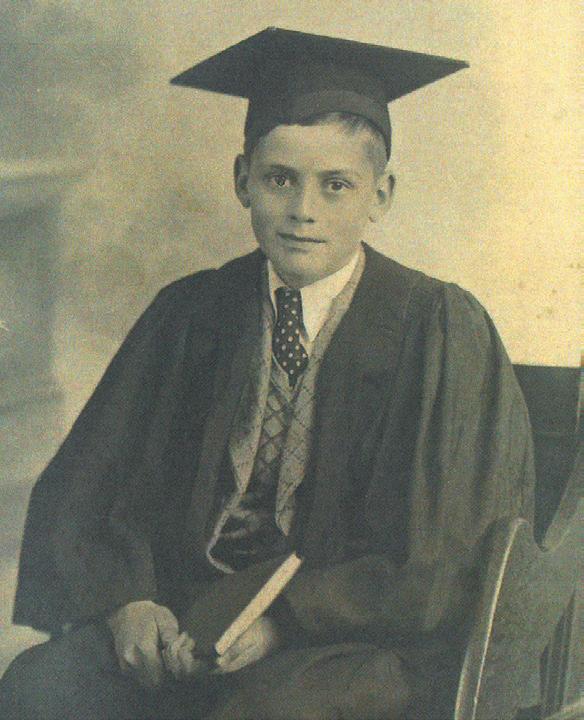 Bryan Kelly as a chorister at Worcester College, Oxford.
Bryan Kelly as a chorister at Worcester College, Oxford.
The composer has explained that the work started life a tone higher – in D – but the publishers pointed out that he was stretching things! As in the Moore and in Howells Collegium Regale, Kelly starts a new paragraph for He hath shewed strength. Following the example of Stanford in B flat, Kelly’s Gloria provides an opportunity for musical recapitulation. Like Dyson he makes the canticle into a single movement. Presaging Swayne’s work on Magnificat 2, Kelly’s music is propelled by rhythmic ostinati. The final section He remembering his mercy begins a
thrilling build-up which propels us headlong into the Gloria. In giving musical form to the Magnificat, composers search out parallels in different parts of the text. Kelly uses the same music for all generations shall call me blessed and and the rich he hath sent empty away – one a long distance in time, one a long distance in space. I can’t think of another Magnificat that joyfully highlights the words He hath filled the hungry as the principal moment of reprise; I applaud Kelly’s political instincts in this decision.

Nunc Dimittis also makes use of a rhythmic ostinato. The canticle starts in the tonic minor key, underpinning a sort of funeral march for the old man Simeon, which calls to mind Stanford in A on our first volume. At the end of the movement the same ostinato is given the new function of building tension as we approach the Gloria. The dark shadows of the opening are replaced by major tonality celebrating the hope of To be a light. A series of rising pedal
points spanning a major sixth leads to the final dominant, further heightening the tension whilst leading into a reprise of the Gloria. In the central part of the canticle’s tripartite musical structure the choir is liberated from the organ ostinati; Simeon’s soul breaks free to meet God
– For mine eyes have seen thy salvation. Simeon has come face to face with God in the person of the baby Jesus, but Christians believe he will imminently continue to enjoy such proximity after his own death.
The work continues to divide opinion. I can think of one distinguished former Cathedral Organist – a relation of mine, in fact – who refused ever to perform the work. Writing about Jackson in G for Magnificat 2 I mentioned the way Boris Ord noticeably winced at the [….] jazz-influenced chromatics, and his stern injunction that there should be no such thing. Like Jackson to a lesser extent in the previous decade, Kelly presaged the incorporation of popular idioms into mainstream music. Sixty years on there has been a blurring of the boundaries between classical and non-classical.
Magnificat 3 gives an opportunity to hear three generations of composer-pupil relationships in Stanford, Howells and Kelly. I hope it also
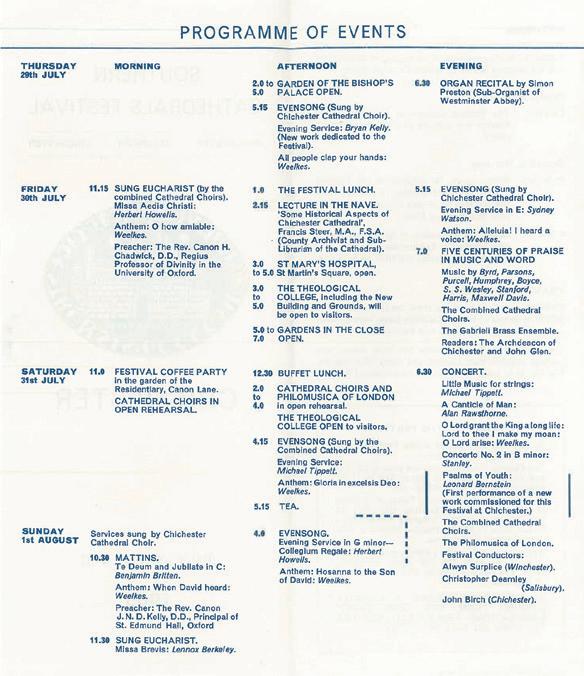
provides a satisfying and varied aural journey from the deep introspection of Chesnokov through to the irrepressible joie de vivre of Kelly.
Andrew Nethsingha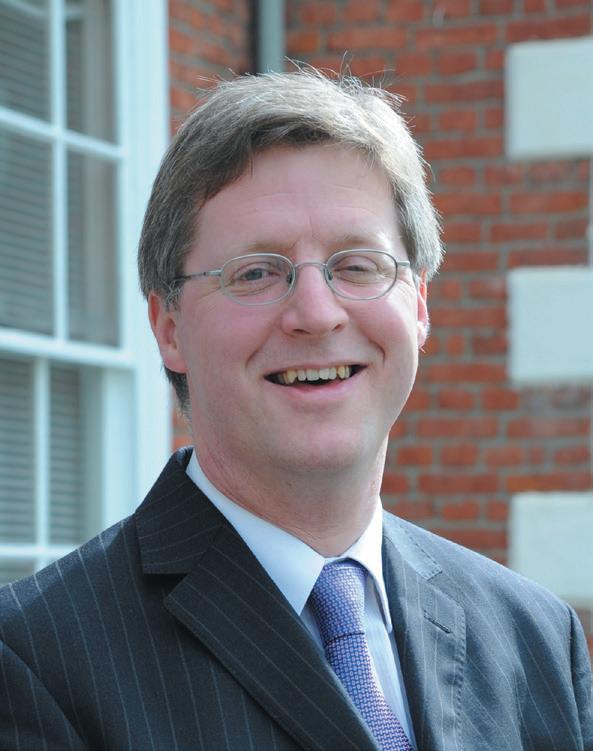
Over recent decades, several commentators have described Herbert Howells’ liturgical musical style as manifesting ‘timelessness’ or ‘eternity’, particularly in settings such as the St Paul’s Service. What creates this effect?
References in the music to ‘ancient’ idioms are an important factor. Echoes of plainsong are heard in the modality, melodic tread, melismatic flourishes and ‘additive rhythms’. Well reported, too, is Howells’ love of Tudor music, its styles, mannerisms and sensitivities. In the St Paul’s Service, close imitation of head motifs (“as it was”) by different voice parts at a variety of pitches recalls the stretti of Tallis and Byrd. Howells’ preoccupation with dance forms, particularly the Saraband, of which more below, is celebrated. Hemiola, syncopation and counterpoint find their inspiration in sixteenthcentury music. Perhaps the dialogue between
organ and choir at the start of the Magnificat and Nunc Dimittis Glorias originates in alternatim performance.
The dream-like sense of eternity, however, kicks in not from the start, but after the first musical paragraph (around “and holy is his name”). Two significant changes take place at this point. Following an opening section rooted in
symphonic, business-like duple time, the gear shifts into slow triple-time Saraband, remaining there for most of the rest of the Magnificat and the entire Nunc Dimittis. Similarly, after an initial dorian-inspired modality, the section “And his mercy” moves into a new harmonic idiom, returning only briefly at the Glorias. Within a page a transformation is complete which sets the scene for the rest of the work.
and sevenths are daubed onto prolonged triads for added colour. Triadic harmony is subverted and repurposed, under Debussian influence. Second- or third-inversion chords are elongated and unresolved, suspending the sense of direction, blossoming, as it were, into eternity. The piling up of appoggiaturas (“seed”), and the resolution of one dissonance into another (“and hath exalted”) are further extensions of the language that draw us towards temporal limbo.
The rules from then on are different. Harmonic rhythm largely slows into stasis, with periods of four, six, eight, 12 or (at the beginning of the Nunc Dimittis) 20 bars governed by one chord or bass note. Even the travelling harmony is often slow (every two bars at “He remembering”) with pivot notes blurring the edges of chord changes; harmony shifts and evolves, is less definite. There are no perfect cadences, and though the long-term structure returns to G, reprising at the Magnificat Gloria, normal harmonic expectations are dismantled. Such tonal organisation over the long term, with an alternative short-term focus, is reminiscent of other composers of the period, including Messiaen.
The harmonic language at this point is best described as a form of late Romanticism. Sixths
Tonality, functional harmonic rhythm and cadence are strongly linked to our perception of time in music. But in chant, Tudor choral music, some late Romantic music (think Richard Strauss), and in Howells’ liturgical music, it is text that drives musical structure. Liberation from tonal etiquette frees form and thereby experience, replacing tonal drama with a revelling in sonority. Meditative space is opened up. In Howells, expressivity is not worn on the sleeve as with Wagner, but is drawn inwards, perhaps due to the restraining elements of the ‘ancient’ associations, the monastic roots of the office asserting themselves over the operatic. The result is a particularly appropriate mode of expression for liturgical music. In terms of its reserved yet deep expression, it is quintessentially English.
The St Paul’s Service appears visionary or dream-like; contrapuntal voices come in and out of focus, lines of harmony and structure are blurred, the ancient is evoked, and time is suspended. The whole floats on a comfort-bed of sustained organ accompaniment, within a cavernous intended acoustic. No wonder it is such a heady mix.
The word ‘decadent’ may once have been applied to music like this which, in style and method, stands in opposition to the forms and disciplines of the established Western canon. Perhaps rather, in terms of the human condition and the art that flows from it, there is deepseated integrity and inspiration in an agnostic composer reaching out so expressively and fervently towards the Eternal.
Andrew Reid Former Director of the RSCM, 2012-2017My soul doth magnify the Lord: and my spirit hath rejoiced in God my Saviour. For he hath regarded: the lowliness of his hand-maiden. For behold, from henceforth:
all generations shall call me blessed. For he that is mighty hath magnified me: and holy is his Name. And his mercy is on them that fear him: throughout all generations. He hath shewed strength with his arm: he hath scattered the proud in the imagination of their hearts. He hath put down the mighty from their seat: and hath exalted the humble and meek. He hath filled the hungry with good things: and the rich he hath sent empty away. He remembering his mercy hath holpen his servant Israel: as he promised to our forefathers, Abraham and his seed for ever.
Glory be to the Father, and to the Son: and to the Holy Ghost; As it was in the beginning, is now, and ever shall be: world without end. Amen.
Luke 1: 46-55
Lord now lettest thou thy servant depart in peace: according to thy word. For mine eyes have seen: thy salvation, Which thou hast prepared: before the face of all people; To be a light to lighten the Gentiles: and to be the glory of thy people Israel.
Glory be to the Father, and to the Son: and to the Holy Ghost; As it was in the beginning, is now, and ever shall be: world without end.
Amen.
Luke 2: 29-32
Ны́не отпуща́еши раба́ Твоего́, Влады́ко, по глаго́лу Твоему́, съ ми́ромъ;
я́ко ви́деста о́чи мои́ спасе́нiе Твое́, е́же еси́ угото́валъ
предъ лице́мъ всехъ люде́й, светъ во открове́нiе язы́ковъ, и сла́ву люде́й Твои́хъ Изра́иля.
NUNC DIMITTIS
CHURCH SLAVONIC
TRANSLITERATION BY
LADA VALESOVA
Nïnye otpushcháyeshi rabá Tvoyegó Vladïko, po glagólu Tvoyemu, s mírom; yáko vídyesta óchi moyí spasyéniye Tvoyé, yézhe yesí ugotóval pryed litsém fsyékh liudyéi, svyét vo otkrovyéniye yazïkov, i slávu liudyéi Tvoyíkh Izráilya.
“The appeal here, quite aside from some excellent playing, is in the way the programme has been planned… Julia Hwang is a model of expressive purity in the solo part [of The Lark Ascending] while Charles Matthews provides her with an appropriately stilled accompaniment”
Gramophone
“This is often a beguiling – and well-recorded – album. The countertenor’s fans need not hesitate, and adventurous Schubertians might well also want to seek it out for a fresh perspective on this familiar work”
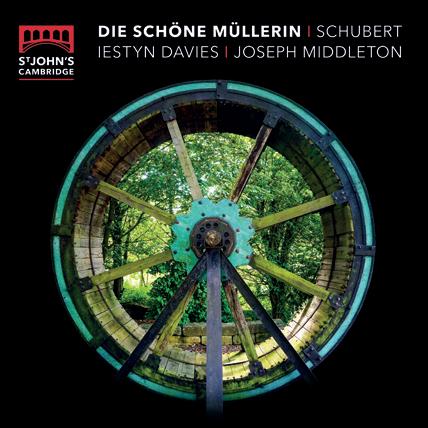
Gramophone
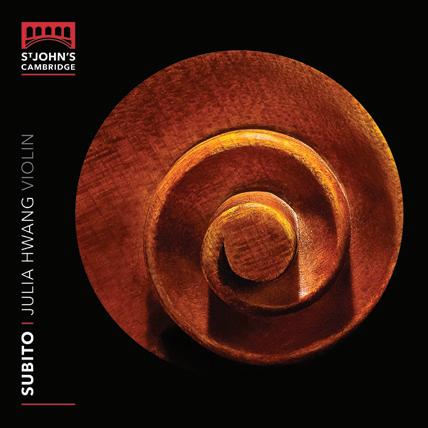
Trebles
Felix Bamford
Angus Crichton-Stuart 5
Joshua Davidson 4, 5
George Ducker
Nicholas Garcia
Gabriel Gritten
Caspar Johnson
Kevin Ke
Kieran McGurran
Lucas Nair-Grepinet
Ivan Popov
Samuel Smith
Montague Tatnell
Counter Tenors
Alastair Austin 4
Francis Bamford
Richard Decker
Alec D’Oyly
Tenors
James Gant
Joseph Hancock
Hamish MacGregor
Euan O’Connor
(Moore/St Paul’s Mag only)
Carlos Rodríguez Otero 5
Basses
Thomas Butler 5
Alexander Hopkins
David McIntyre
Henry Montgomery
(Dyson/St Paul’s Nunc Dimittis/Westminster only)
Alexander Semple
Max Todes
George Vines
Herbert Howells
Organ Scholar
George Herbert *
Junior Organ Scholar
Alex Trigg
*This organist was playing for the recording
Numbers indicate soloist credits for each track
Trebles
Arthur Cobb
Angus Crichton-Stuart
Joshua Davidson
George Ducker
Nicholas Garcia
Gabriel Gritten
Caspar Johnson
Kevin Ke
(Chesnokov/Stanford only)
Charles Lipscomb
Kieran McGurran
Lucas Nair-Grepinet 10
Ivan Popov
Samuel Smith
Montague Tatnell
Aiden Wee
Counter Tenors
Alastair Austin
Richard Decker
Hannah Dienes-Williams
(Chesnokov/Stanford only)
Alec D’Oyly
Guy James
(Kelly/Leighton Nunc Dimittis only)
Hamish McLaren
(Leighton Magnificat only)
Tenors
James Gant
Joseph Hancock
Hamish MacGregor
(Kelly/Leighton only)
Carlos Rodríguez Otero
Joseph Wicks
(Chesnokov/Stanford only)
Basses
Thomas Butler 1
Alexander Hopkins 11
David McIntyre
Henry Montgomery
Alexander Semple
Max Todes
George Vines
(all except Leighton Magnificat)
Herbert Howells
Organ Scholar
George Herbert *
Junior Organ Scholar
Alex Trigg
*This organist was playing for the recording Numbers indicate soloist credits for each track
The Choir of St John’s College, Cambridge is one of the finest collegiate choirs in the world, known and loved by millions from its broadcasts, concert tours and over 100 recordings. Founded in the 1670s, the Choir is known for its distinctive rich, warm sound, its expressive interpretations and its breadth of repertoire. Alongside these musical characteristics, the Choir is particularly proud of its happy, relaxed and mutually supportive atmosphere. The Choir was directed by Andrew Nethsingha between 2007 and 2022. He followed a long line of eminent Directors of Music, recently Dr George Guest, Dr Christopher Robinson and Dr David Hill. Nethsingha’s successor, Christopher Gray, will take up post in April 2023.
The Choir is made up of around 20 Choristers and Probationers from St John’s College School and around 16 Choral Scholars who are members of St John’s College, its primary purpose being to enhance the liturgy and worship at daily services in the College Chapel. The Choir has a diverse repertoire spanning over 500 years of music. It is also renowned for championing contemporary music by commissioning new works, including recent
compositions by Cheryl Frances-Hoad, Judith Bingham, Julian Anderson, Anna Semple, Katrina Toner, Ignacio Mañá Mesas, Cecilia McDowall, Helen Grime, David Nunn, Jonathan Dove and Iain Farrington. Each term, the Choir is joined by its period instrument ensemble St John’s Sinfonia to perform Bach Cantatas in a liturgical setting.
The Choir brings the ‘St John’s Sound’ to listeners around the world through its weekly webcasts (available at www.sjcchoir.co.uk). The Choir has also live-streamed video broadcasts of Chapel services on Facebook, in association with Classic FM. In addition to regular radio broadcasts in this country and abroad, the Choir releases multiple recordings each year. In May 2016 the College launched its ‘St John’s Cambridge’ recording label (in conjunction with Signum Classics). Since then 14 Choir albums have been released. These include single composer albums of Jonathan Harvey (BBC Music Magazine Award winner), Ralph Vaughan Williams and Michael Finnissy, the latter of which was a finalist in the 2021 Gramophone Awards. In addition to this album, there have been a further two ‘Magnificat’ albums of varied
Evensong Canticles, an anthem compilation
Locus Iste, masses by Poulenc and Kodály, a live anthology The Tree, a Psalms collection, and seasonal albums for Advent, Christmas, Ash Wednesday and Eastertide.
The Choir also performs concerts outside of Cambridge and tours internationally each year. Recent destinations have included the USA, the Netherlands, France, Sweden, Denmark, Germany, Hungary, Hong Kong and Singapore. It also performs regularly in the UK, with venues including Symphony Hall, Birmingham, Royal Albert Hall and Royal Festival Hall, London.
George is the Assistant Organist at St John’s, following three years as the choir’s Organ Scholar whilst he studied Music and German. Born in Manchester in 2001, his passion for music was kindled in earnest when he started singing in Manchester Cathedral Choir aged nine.

He joined Chetham’s School of Music at this time too, where he studied the trumpet after leaving the Cathedral’s choir. He played in a fanfare brass ensemble alongside the Gabrieli Consort in their recording An English
Coronation, and was involved in the school’s orchestras and big bands. He also studied Music Therapy in a course run by Nordoff Robbins. When he was 16, George returned to Manchester Cathedral as Organ Scholar.
He now studies organ with Colin Walsh and piano with Keval Shah. In his first two years in Cambridge, he was a pianist in Pembroke
College’s Lieder Scheme, taking regular classes with accompanist Joseph Middleton. In his final two years as a student, he was co-musical director of the College Choir’s close harmony ensemble, the Gentlemen of St John’s, and played in the St John’s College Big Band. In 2020 George conducted St John’s Sinfonia and the College Choir in Bach’s Actus Tragicus cantata, and in 2021 he conducted the choir’s Advent Carol Service, which was broadcast live on BBC Radio 3. He is a passionate environmentalist, and studied Cold War East Germany’s environmental policy and foreign relations for his final year dissertation.
George now directs Aquila, the College’s all-female a capella ensemble, and is building a varied freelance career as a choir trainer, animateur, organist and trumpeter. He is a coach on the Oxford and Cambridge Singing School, and enjoys regularly collaborating with Kantos Chamber Choir, the Armonico Consort, and funk band Lepage-Dean. He looks forward to performing Bernstein’s Mass at the Royal Northern College of Music in March 2023.
Performing in North America, South Africa, the Far East, and throughout Europe, Andrew Nethsingha was Director of Music at St John’s College, Cambridge from 2007 to 2022. He has released over 25 albums with the Choir of St John’s. He helped to set up the recording label, ‘St John’s Cambridge’, in conjunction with Signum Classics. The first release on this label, DEO (music by Jonathan Harvey), was a 2017 BBC Music Magazine Award winner. Six recent albums have been ‘Editor’s Choice’ in Gramophone Magazine. Pious Anthems & Voluntaries (music by Michael Finnissy) was runner-up in the Contemporary category of the 2021 Gramophone Awards. His announcement that in future the St John’s Choir will include male and female voices, both adults and children, was hailed by Classic FM as “one of the 10 defining classical moments of 2021.”
Andrew Nethsingha was a chorister at Exeter Cathedral, under his father’s direction. He later studied at the Royal College of Music, where he won seven prizes, and at St John’s College,
Cambridge. He held Organ Scholarships under Christopher Robinson at St George’s Windsor, and George Guest at St John’s, before becoming Assistant Organist at Wells Cathedral. He was subsequently Director of Music at Truro and Gloucester Cathedrals, and Artistic Director of the Gloucester Three Choirs Festival.
Andrew’s concerts conducting the Philharmonia Orchestra have included: Mahler’s 8th Symphony, Beethoven’s 9th Symphony, Britten’s War Requiem, Brahms’ Requiem, Elgar’s The Dream of Gerontius and The Kingdom, Walton’s Belshazzar’s Feast, Poulenc’s Gloria and Duruflé’s Requiem. He has also worked with: the Royal Philharmonic Orchestra, City of Birmingham Symphony Orchestra, London Mozart Players, Britten Sinfonia, Orchestra of St Luke’s (New York), Aarhus Symfoniorkester, and BBC Concert Orchestra. Venues have included the BBC Proms, Amsterdam Concertgebouw, Verbier Festival, Tokyo Suntory Hall, Konzerthaus Berlin, and Singapore Esplanade.
In January 2023 Andrew moved to a new post as Organist and Master of the Choristers at Westminster Abbey.

The Choir thanks those who continue to support the ‘St John’s Cambridge’ recording label through The Album Recording Fund, in particular Mr Archie Burdon-Cooper.
We would also like to thank the Reverend Canon Michael Garland for his support of this recording.
Publishers:
Encore Publications (Moore)
Novello (Dyson, Howells St Paul’s & Westminster, Kelly, Leighton, Stanford)
Recorded in St John’s College Chapel, Cambridge, UK on the following dates:
12th – 13th January 2022 (Dyson, Howells
St Paul’s & Westminster, Moore)
21st – 23rd April 2022 (Chesnokov, Kelly, Leighton, Stanford)
Producer – Chris Hazell
Engineers – Simon Eadon & Dave Rowell
Editor – Matthew Bennett
Dean – The Rev’d Dr Mark Oakley
Project Manager – James Beddoe
Cover Image – Kathryn Jones
Design and Artwork – Woven Design
www.wovendesign.co.uk
P 2023 The copyright in this sound recording is owned by Signum Records Ltd
© 2023 The copyright in this CD booklet, notes and design is owned by Signum Records Ltd
Any unauthorised broadcasting, public performance, copying or re-recording of Signum Compact Discs constitutes an infringement of copyright and will render the infringer liable to an action by law. Licences for public performances or broadcasting may be obtained from Phonographic Performance Ltd. All rights reserved. No part of this booklet may be reproduced, stored in a retrieval system, or transmitted in any form or by any means, electronic, mechanical, photocopying, recording or otherwise, without prior permission from Signum Records Ltd.
SignumClassics, Signum Records Ltd., Suite 14, 21 Wadsworth Road, Perivale, Middlesex, UB6 7LQ, UK. +44 (0) 20 8997 4000
E-mail: info@signumrecords.com
www.signumrecords.com
Latest Release
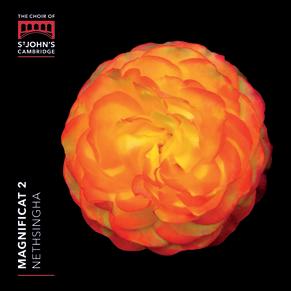

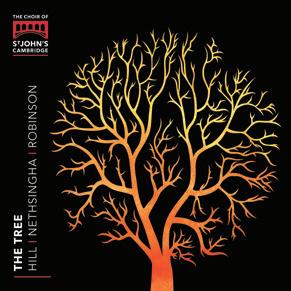

The Psalms SIGCD721
A collection of Psalms sung to Anglican Chant. Psalm-singing is at the heart of the choir’s daily music-making, forming an integral part of its identity.
Composers include the choir’s former Director of Music, Dr Christopher Robinson.
Europadisc
Easter Highlight
Eastertide Evensong SIGCD707
HHHHH “The results are extremely fine, with much attention to musical detail, clear diction, impeccable tuning and a well-balanced choral blend”
Choir & Organ
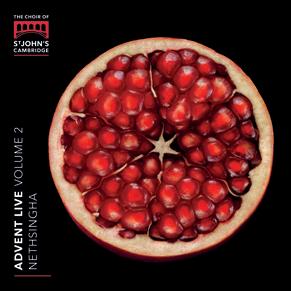
Gramophone
Editor’s Choice
“Nethsingha is his own man and absolutely his own musician, which is why his choir continues to evolve and lead” Gramophone
“For all devotees of choral evensong, this is an indispensable disc”
Opera Today
The Tree SIGCD691
“The whole thing is a beautifully realised tribute to the history of the choir and its hope for the future” BBC Record Review
“A well-crafted and beautifully sung disc” BBC Music Magazine
“It’s not just Andrew Nethsingha’s controlled shaping of musical paragraphs that attract the ear, it is the eager and exultant tone from the boys” Opera Today
HHHHH “The outstanding quality of the singing and playing is the reason to buy this recording. Even something as straightforward as Stanford’s ‘A song of Wisdom’ is given a ravishing performance” Choir & Organ
“The St John’s sound is showcased in all its flexibility from a sinewy directness in James Long… to a shimmering miasma in Jonathan Harvey” Gramophone
Magnificat 2 SIGCD667
“These are inspirational performances, music wonderfully shaped and words unfailingly invested with meaning” Opera Today
“A package that no lover of the Anglican choral tradition will want to miss”
BBC Music Magazine
“They’re on cracking form right now… there’s that sort of earthy ferocity that is totally exhilarating… the control, the pianissimo and the clarity this recording brings is magnificent” BBC Radio 3 Record Review
Gramophone
Editor’s Choice
Finalist (Contemporary)
Gramophone Awards 2021
BBC Music Magazine
Choral & Song Choice
Top Ten Recording of the Year
Europadisc
“This choir’s singular qualities – responsiveness, sophistication of line and texture and a chameleonic stylistic acumen that never loses sight of its own core, identifying sound – are all in play here” Gramophone
Advent Live - Volume 2 SIGCD661
“It is a real album, the mystery and expectation of Advent coursing through a repertoire that never stoops below this ensemble’s judicious idea of what constitutes high-quality music, whatever the century... The qualities of the choir hardly need repeating” Gramophone
“The fantastic balance of anthems, hymns and organ music leaps out in this arresting, fabulously performed Advent programme” BBC Music Magazine
Michael Finnissy – Pious Anthems & Voluntaries SIGCD624
HHHHH “The sequence maintains a powerfully communicative grip...
The choir makes the music sound as lived-in as Byrd or Howells”
BBC Music Magazine
“Essential listening” Planet Hugill
HHHHH “Exquisitely beautiful, sensual music” Choir & Organ
“An 84-minute work that might well change your listening life” Classical Music
“This is some of the most compelling music written for the ‘English choral tradition’ in many years… the results are infinitely rewarding” Europadisc
Ash Wednesday SIGCD605
“The malleable, sensitive trebles have what seems to me an unparalleled ability to invest text and phrase with meaning” Gramophone
“It’s the most glorious, glorious music making” BBC Radio 3, Record Review
“Vor allem das Misere mei, Deus von Allegri und Byrds überwältigende Motette
Ne Irascaris, Domine gehen unter die Haut, genau wie das zum Schluss
Gramophone
Editor’s Choice
erklingende e-Moll Präludium für Orgel von Johann Sebastian Bach” (Above all, the Miserere mei, Deus by Allegri and Byrd’s overwhelming motet Ne Irascaris, Domine get under the skin, as indeed does Johann Sebastian Bach’s Prelude in E minor, heard at the end) Südwest-Presse (Germany)
HHHHH “Exceptionally satisfying. Bravo. Bravissimo” AllMusic
Magnificat SIGCD588
“extreme perception of blend (vowel and timbre), words and phrasing; a true ensemble” Gramophone
HHHHH “A fascinating hour’s music” Choir & Organ
« Superbe. Les petits trebles sont en grande forme » Diapason (France)
“A finely calibrated sense of tone colour. Don’t miss it” Limelight (Australia)
Gramophone
Editor’s Choice
Locus Iste SIGCD567
HHHHH “a glint of sunlight, inspired and inspiring” BBC Music Magazine
“Beautifully captured” BBC Radio 3, Record Review
“This disc really soars” Gramophone
Advent Live SIGCD535
“Under Andrew Nethsingha’s inspired direction, the choir has retained its renowned clarity, flamboyance and readiness to take risks” Gramophone
“Sung with typical St John’s verve and character, this superbly programmed collection will take your Advent listening in unexpected, but entirely apposite, directions” BBC Music Magazine
BBC Music Magazine
Choral & Song Choice
Vaughan Williams – Mass in G Minor SIGCD541
HHHHH “Formidably attractive” BBC Music Magazine
“Director Andrew Nethsingha shapes a performance of profound dignity and power, beautifully sung by this always impressive choir” The Guardian
“The choral recordings that St John’s College Choir have released on this label so far have been uniformly excellent, and this is another golden string to add to their bow” MusicWeb International
“The treble voices of St John’s bring an ineffably poised gravity… a signal virtue of this new recording is the moulded caress of every luscious harmony in what are predominantly homophonic works” Gramophone
“These two contrasting masses and Janácek’s Lord’s Prayer (Otče náš) are sung with characteristic ‘European’ ripeness of tone and precision by the choir of St John’s College” The Observer
HHHHH “…a superb reading from Nethsingha and his forces… Throughout, the choir sing with their justly famed blend and perfect intonation. An essential disc…” Choir & Organ
“Under Nethsingha, St John’s Choir rides high among the Cambridge colleges… Nethsingha’s programming is eclectic while retaining a ‘traditional’ core”
The Sunday Times
“A fine showcase of a choir on the top of its form” planethugill
“proving yet again, they are as good as it gets” Classic FM
“it’s a sign of how classy and successful a programme has been compiled, that Michael Finnissy’s John the Baptist fits so well into the weave of Christmas with St John’s” Gramophone
“showcases a choir and its director who are currently in very fine fettle indeed.”
MusicWeb International
“a meticulously sung carol collection from the always classy choir of St John’s... shimmering tone clusters and delicious suspensions” The Guardian
BBC Music Magazine
Award Winner
Gramophone
Editor’s Choice
Jonathan Harvey – DEO SIGCD456

HHHHH “ecstatic…the Choir tackles it all with confidence and clarity”
The Observer
HHHHH “characterful yet authoritative performances of which they can be justly proud” Choir & Organ
“an evocatively sung collection...glowing with devotional joy, wonder and a kaleidoscope of colours and emotions” Choir & Organ

